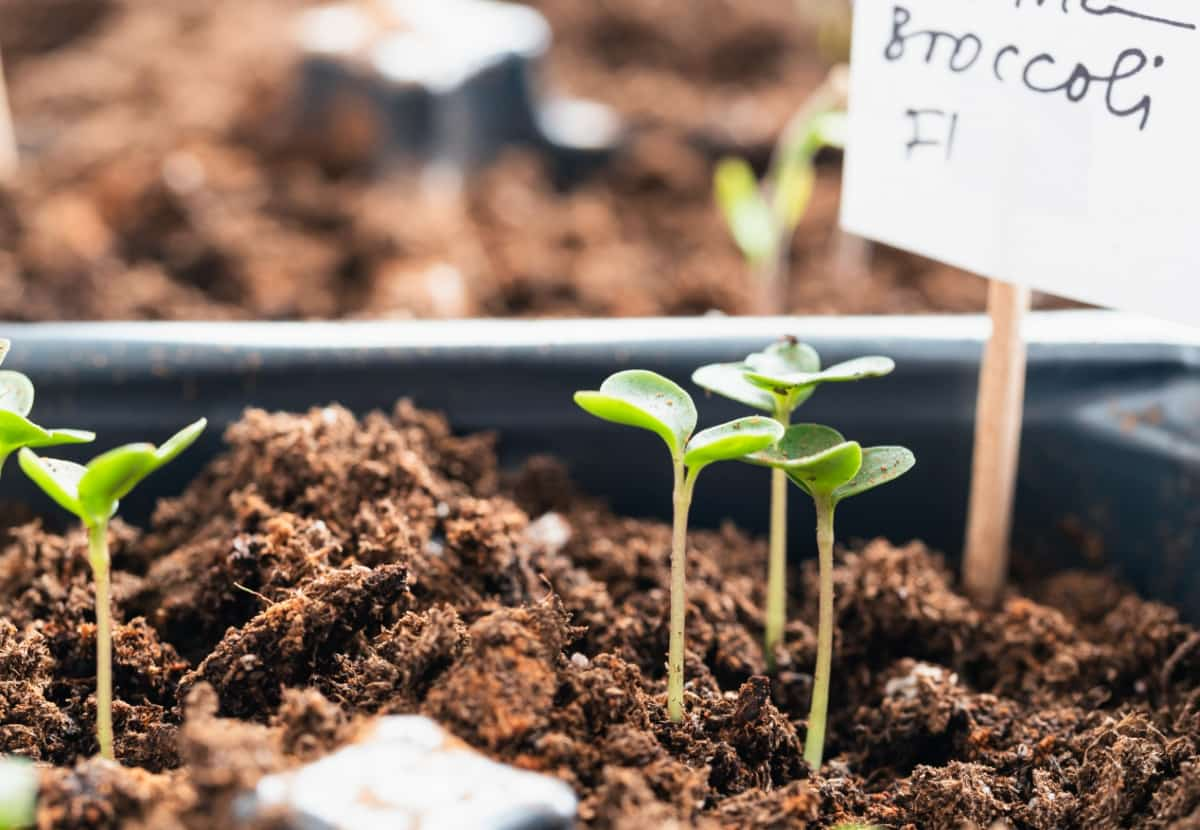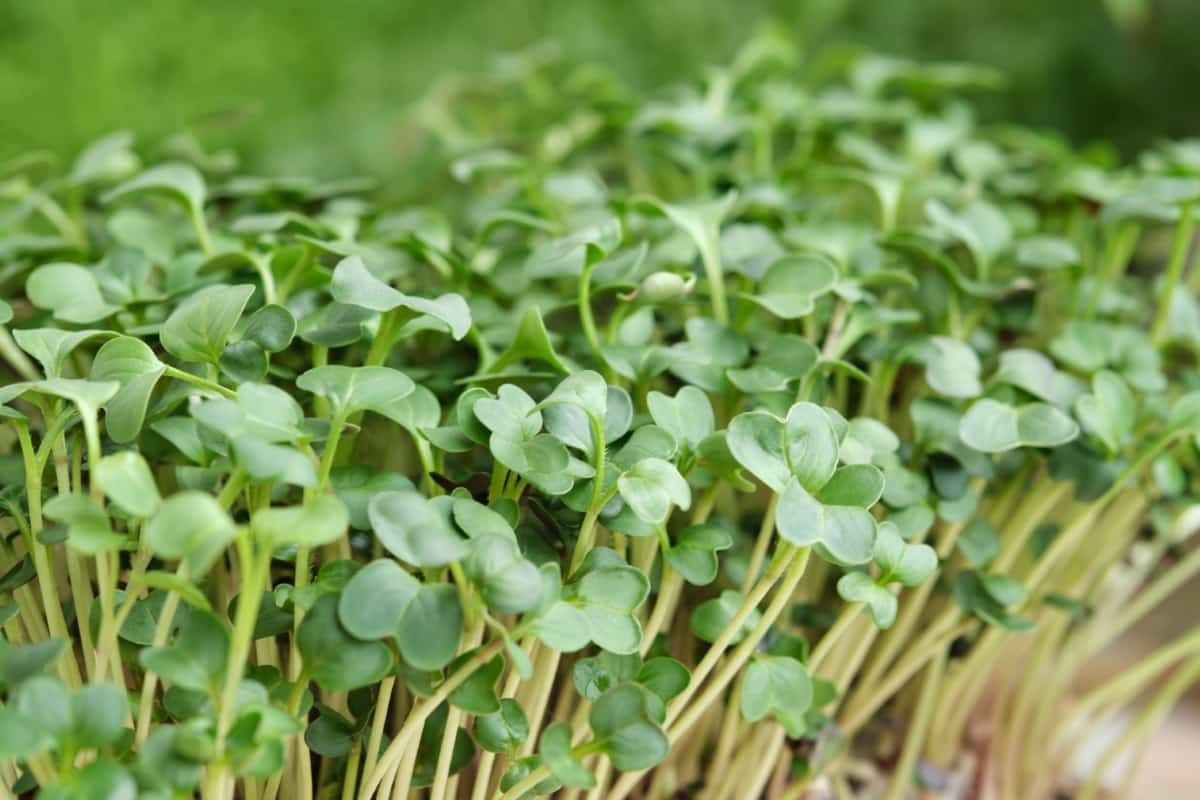Broccoli, a nutritious and versatile vegetable, offers various propagation methods, each with its unique advantages. Exploring these techniques, such as seed propagation, cuttings, and advanced methods like tissue culture, provides insights into the diverse ways to cultivate this valuable crop.
Different Methods for Broccoli Propagation
Explore the Process of Seed Propagation of Broccoli
Broccoli propagation from seed is a fundamental technique for growing this nutritious vegetable. Starting with quality broccoli seeds, the initial step involves sowing them in well-drained soil, preferably during a period conducive to broccoli growing temperature. Seeds should be planted at an appropriate depth and spaced adequately to ensure sufficient growth room. Germination typically occurs within a few days to a week, given the right temperature and moisture conditions.

Once the seedlings emerge, they require adequate light and water to thrive. During this stage, careful monitoring of soil moisture and temperature is crucial for healthy growth. The process from sowing to transplanting can vary, but generally, it takes several weeks for seedlings to mature enough for the next stage of growth.
Transplant Broccoli Seedlings
Transplanting broccoli seedlings is a critical step in broccoli cultivation. This process usually begins once the seedlings have developed a few true leaves and are strong enough to withstand the transplant. The best time to transplant is during cooler parts of the day to reduce stress on the plants.
Preparing the transplant site involves ensuring the soil is rich in nutrients and has good drainage. Seedlings should be carefully uprooted, keeping the root ball intact, and then transplanted into holes spaced adequately apart to accommodate the mature size of the plants. Post-transplant, it’s important to water the seedlings thoroughly and protect them from extreme weather conditions, pests, and diseases.
Technique of Propagating Broccoli from Cuttings
Propagating broccoli from cuttings is another method that gardeners use. This technique involves cutting a healthy broccoli stem and placing it in water or directly into soil. The cuttings should include several leaf nodes, as these are the points where new roots will develop. When placed in water, it’s essential to change the water regularly to prevent rot and encourage root growth.
For soil propagation, the cutting should be planted in a moist, nutrient-rich medium and kept under suitable growing conditions. With proper care, roots will develop, and the cutting will eventually grow into a new broccoli plant. This method is particularly useful for preserving desirable traits of a specific plant.
Division Method: Dividing Broccoli Plants for Propagation
The division method is a straightforward technique for broccoli propagation, particularly effective for mature plants. It involves dividing the root system of an established broccoli plant into multiple sections, each with its own set of roots and shoots. The divisions are then replanted separately, allowing them to grow as individual plants.
In case you missed it: The Economics of Broccoli Farming: Costs, Profits, and Market Trends

This method is best performed during cooler parts of the year and requires careful handling to minimize damage to the roots. Once divided and replanted, the new plants need regular watering and monitoring to ensure successful establishment and growth.
Layering Technique for Broccoli Propagation
Layering is a unique propagation technique that can be used for broccoli. It involves bending a healthy, flexible stem of a broccoli plant to the ground and partially burying it in the soil while still attached to the parent plant. The buried portion of the stem should be wound slightly to encourage root formation.
Over time, roots will develop at the site of the wound, and once a substantial root system is established, the new plant can be severed from the parent plant and transplanted elsewhere. This method is beneficial for propagating specific varieties and maintaining the genetic consistency of the plants.
Tissue Culture Broccoli Propagation
Tissue culture is a modern method of broccoli propagation, primarily used for commercial production due to its ability to produce large numbers of plants from a small tissue sample. This technique involves taking a small, sterile piece of broccoli tissue and placing it in a special growth medium under controlled conditions.
The tissue then grows and multiplies, eventually developing into complete plants. Tissue culture is a precise and efficient way of propagation, ensuring genetic uniformity and disease-free plants. However, it requires specialized equipment and knowledge, making it less accessible for amateur gardeners.
Air Layering for Broccoli Propagation
Air layering is a slightly more complex method of propagating broccoli, similar to ground layering but conducted on the stem while it is still in the air. This technique involves making a small cut on a healthy stem, applying a rooting hormone to the cut, and then wrapping it with moist sphagnum moss or a similar medium.
In case you missed it: Common Mistakes to Avoid in Broccoli Farming: Precautions for First-Time Broccoli Farmers

The wrapped area is then covered with plastic to retain moisture. New roots will form where it was cut, and once they’re well-established, the new plant can be separated from the parent and moved. Air layering is particularly useful for propagating large or woody broccoli plants that are difficult to bend to the ground for traditional layering.
Grafting as a Technique for Broccoli Propagation
Grafting is a sophisticated propagation technique often used in broccoli cultivation to combine desirable traits of two different plants. This method involves joining the stem of one broccoli plant (the scion) to the root system of another (the rootstock). The scion, selected for its quality fruit or resistance to disease, is carefully attached to the rootstock, which is chosen for its robust root system and adaptability to soil conditions.
The grafting site is then sealed to facilitate the healing process and the fusion of the two plant parts. This method allows gardeners to create broccoli plants that are more resilient, productive, and adapted to specific growing conditions. However, grafting requires precision and skill, and the success rate can vary depending on the compatibility of the plants and the conditions in which they are grown.
Micropropagation for Broccoli Plants
Micropropagation, a form of tissue culture, is an advanced method used in broccoli propagation. It involves growing broccoli plants from small tissue samples in a sterile, controlled environment. This technique starts with selecting a healthy broccoli plant and extracting a small piece of tissue, usually from the shoot tip or a leaf. This tissue is then sterilized and placed in a growth medium containing nutrients and hormones that stimulate cell division and growth.
Under the right conditions, this small tissue sample develops into multiple shoots, which can then be separated and rooted to form new plants. Micropropagation is highly efficient, producing a large number of plants in a relatively short time. It’s particularly valuable for rapidly multiplying superior broccoli varieties and for producing disease-free plants. However, it requires specialized laboratory equipment and expertise, making it more suited for commercial operations than home gardening.
Budding as a Technique for Broccoli Propagation
Budding, similar to grafting, is another propagation technique used in broccoli cultivation. It involves taking a bud from a desirable broccoli plant and inserting it into the stem of another plant (the rootstock). The selected bud, usually taken from a healthy, mature plant, is carefully grafted onto a cut in the rootstock.
In case you missed it: How and When to Fertilize Broccoli Plants: Requirements and Recommendation

The bud then grows and integrates with the rootstock, eventually developing into a new plant. This technique is particularly useful for combining the qualities of two different plants, such as disease resistance and high yield. Budding can be more efficient than traditional grafting since it uses smaller plant material. However, it requires skill and precision, as well as appropriate timing, to ensure the bud successfully fuses with the rootstock and develops properly.
Conclusion
The propagation of broccoli, ranging from traditional methods like seeds and cuttings to advanced techniques such as tissue culture and grafting, highlights the dynamic nature of plant cultivation. These methods offer gardeners and farmers alike the opportunity to enhance yield, quality, and resilience in their broccoli crops, contributing to sustainable and efficient food production.
- Feed Your Flock for Less: Top 10 Tips to Save on Chicken Feed
- Ultimate Guide to Ossabaw Island Hog: Breeding, Raising, Diet, and Care
- Hatching Answers: The Top 10 Reasons Your Chickens Aren’t Laying Eggs
- Eggs and Economics: Breaking Down the Cost of Raising Backyard Chickens
- Defend Your Greens: Proven Methods to Keep Iguanas Out of Your Garden
- Ultimate Guide to Cinnamon Queen Chicken: A Comprehensive Guide for Beginners
- Ultimate Guide to California Tan Chicken: Breeding, Raising, Diet, Egg-Production and Care
- Ultimate Guide to Marsh Daisy Chicken: Breeding, Raising, Diet, and Care
- 10 Types of Chicken Farming Businesses You Can Start for Profits